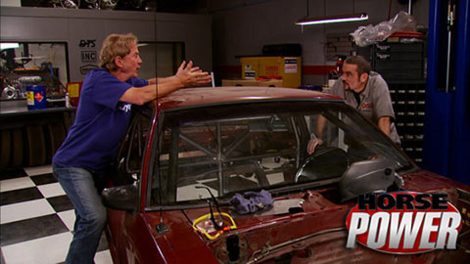HorsePower Builds
Want more content like this?
Join the PowerNation Email NewsletterParts Used In This Episode
2020 Software Solutions, Inc.
Bend-Tech PRO software.
Accufab,Inc.
Clamshell clamp custom 90mm throttle body, clamshell clamp, 4" ferrule, IAC block off plate, throttle position sensor.
Bassani Manufacturing
1 5/8" Equal length coated headers.
CP Pistons
Custom pistons, rings, wrist pins, and locks.
Crower Cams & Equipment Co., Inc.
4340 Forged steel crankshaft custom stroke, Maxi-Light #5 connecting rods, severe duty roller lifters,8620 billet roller camshaft.
Crower Cams & Equipment Co., Inc.
One-piece pushrod 5/16" 8.350 length.
Crower Cams & Equipment Co., Inc.
Shaft mounted rocker arms 1.6 ratio.
Design Engineering, Inc. (DEI)
2" X 50' Exhaust wrap, stainless steel locking ties, Silicone coating (black).
Dupli-Color
Dupli-Color Aerosol Truck Bed Coating.
Hellion Power Systems
Turbonetics Turbocharger (88mm), 16 gauge Stainless Steel hot and cold parts (Mild Steel Headers), Spearco high flow air to air intercooler, High flow Turbonetics wastegate, Silicone hose kit,
Stainless T-bolt clamp kit , 45 mm Blow-off valve, Oil feed and drain lines. All other necessary hardware to install kit.
High Performance Controls
The MFI system was designed from the ground up to provide a very simple and easy to understand tuning interface specifically for race only applications requiring very high fuel flow rates.
Nitro-Plate
NitroPlate Bright is a highly polished aluminum ceramic coating capable of withstanding 1300 degrees. NitroPlate Bright is perfect for headers that see high heat but can also be used on a number of items such as intake manifolds, brake rotors, rear end housings, control arms, brackets, wheelie bars, and hood hinges.
Robert Bosch LLC
High performance "blue top" fuel injectors. 1680cc (160lb/hr).
Summit Racing
Scat Type R fixed racing seats, bracket mounting, slider assemblies.
Trick Flow Specialties
Trick Flow CNC ported 225cc cylinder heads with 70cc combustion chambers, Performance head gaskets for use with o-rings, upper plenum kit.
World Products
Man O' War SBF engine block with 4.030 bore and 9.5" deck, Man O' War polished valve covers.





























